Temples, ryokans and tombstones: A slow travel guide to Kyoto, Japan
Advertisement
Travel
Temples, ryokans and tombstones: A slow travel guide to Kyoto, Japan
Take the road less travelled and immerse yourself in spirituality in Kyoto – a perfect antidote to the hectic step of modern life.
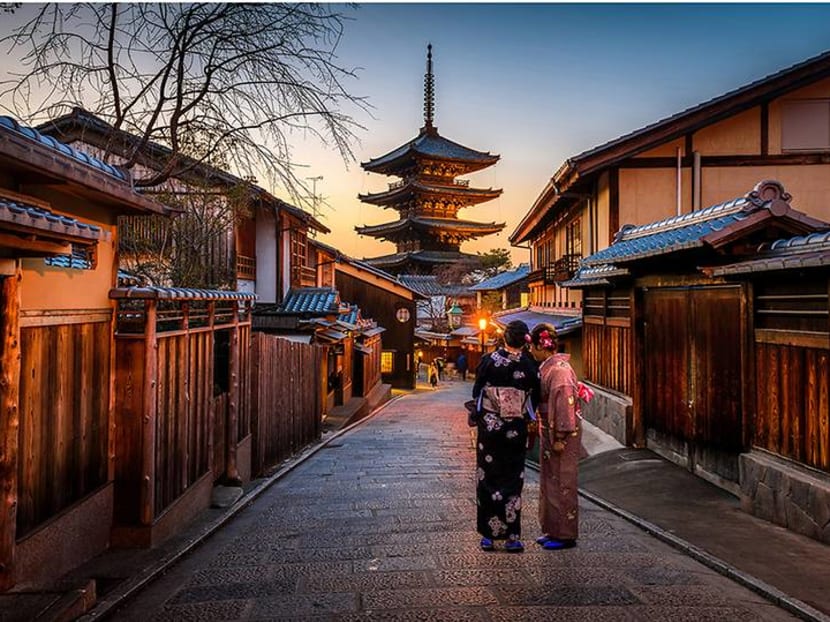
(Photograph: Unsplash)
If Tokyo is the modern beating heart of Nippon, Kyoto is its one-time and beautiful soul. It undeniably holds court when it comes to history and tradition and is probably the all-time identify to acquaint yourself in Japan'due south unique cultural practices, whether it is the ritual behind a tea ceremony or the intricacies of wearing a kimono. There are multiple standouts on Kyoto's tourist trail – the geisha district of Gion, the ethereal Kiyomizu temple and the iconic torii gates at the Fushimi Inari shrine immediately come to mind. Information technology is also revered for its mastery of kaiseki, bustling coffee scene and the abundance of artisanal crafts such as lacquer and porcelain.

With and then much to do in the city itself, it is non surprising that about visitors choose to spend their fourth dimension taking in everything in the city centre. But in order to experience Kyoto's true spirit, seasoned travellers should head to its quieter locales for mindful excursions that soothe the listen, body and soul. Our pick is Koyasan, an ancient village in the Wakayama Prefecture, that offers a deeper immersion into Nippon'south sacred practices.
A PILGRIMAGE TO KOYASAN
In that location are a few ways to get to this mountainous surface area, but nothing beats taking a 30-infinitesimal helicopter ride. Not only is it the fastest route, the stunning bird's-eye view of the city below is well worth the nerves; information technology too offers a mod counterpoint to what awaits at Koyasan. As the birthplace of Shingon Buddhism, information technology is dwelling to over 100 temples and it is quite mutual to see monks going about their day here.
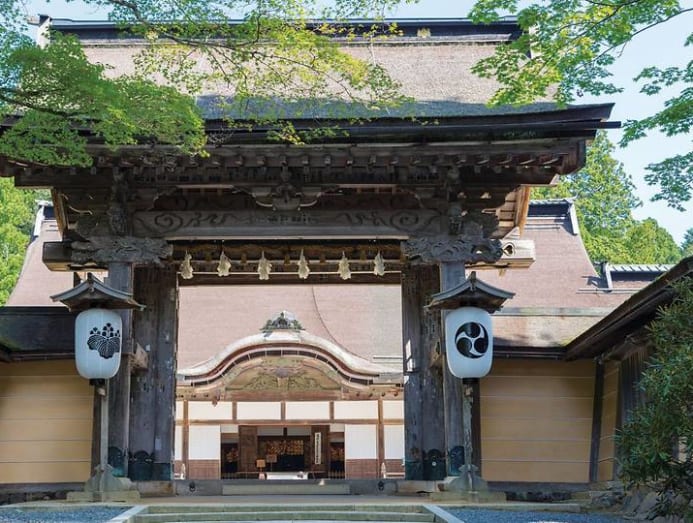
A pop pilgrimage destination for devout Buddhists and tourists alike, many make the journey to this temple settlement to experience a monk'southward lifestyle – ourselves included. Our temple of choice? Souji-in, an elegant setting with both Japanese-and Western-style rooms, besides every bit animal comforts including air-conditioning and a lift.
In between morn prayers and meditation sessions, make sure to book a kaiseki meal in the temple's vegetarian eating house. It is certainly a worthy treat for those early on morn prayer calls. Food lovers should also bookmark Kadohama Gomatofu Sohompo, Nippon'due south nearly famous sesame tofu eatery, to sample this Koyasan speciality.
SINGAPORE TATLER> Kyoto'due south best chefs cook to inspire new traditions
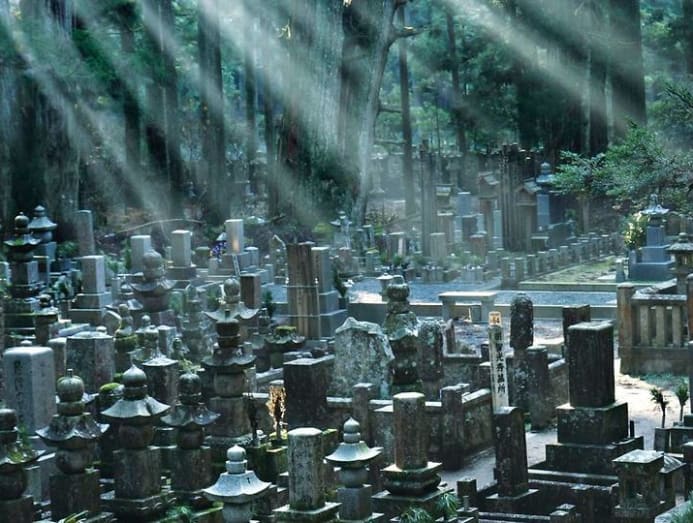
TOMBSTONE TOURISM AT OKUNOIN
1 of the highlights of the hamlet is Okunoin, Nippon's largest and most sacred cemetery. Like to Los Angeles' Hollywood Forever Cemetery or Paris' Pere Lachaise Cemetery, Okunoin is the final resting identify of influential figures, including religious leaders, politicians, samurai clans, celebrities and prominent businessmen.
The presence of these figures fabricated an otherwise eerie experience an enjoyable one, equally nosotros saw customised tombstones and structures erected near their burial places. We spotted a coffee cup, a rocket ship and fifty-fifty a pufferfish tombstone that belonged to a famous fugu chef buried in that location. Tombstone tourism may not be superlative of listen when visiting Kyoto, but information technology adds an unexpected flavour to the quintessential Kyoto itinerary.
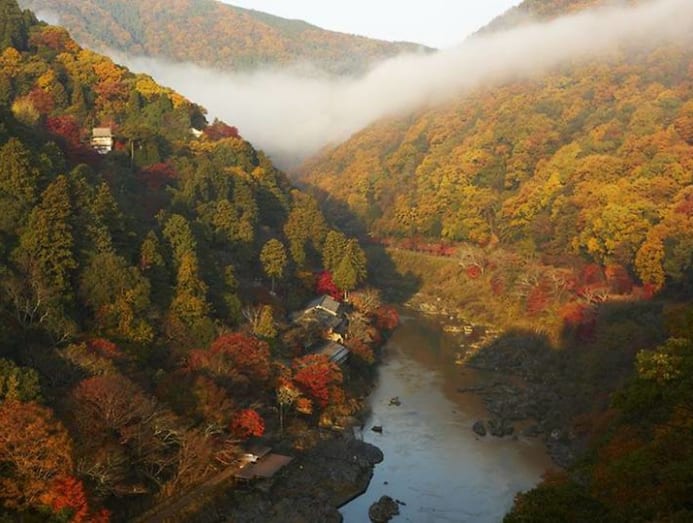
A Majestic RETREAT IN ARASHIYAMA
One of the best ways to truly take it slow is to experience a ryokan, a traditional Japanese hotel. Our pick? Hoshinoya Kyoto in Arashiyama, a short railroad train ride abroad from the metropolis centre. To telephone call Hoshinoya Kyoto a luxury ryokan would be accurate, just information technology is besides an under‑representation of what awaits at this truly special place.
Jubilant its 10th anniversary this year, the hotel transcends from being but a home for the nighttime to becoming a destination in itself. A lot of it has to do with its magnificent location. Nestled in the pristine surrounds of Arashiyama – a protected expanse all-time known for its towering bamboo wood – Hoshinoya Kyoto sits on a quiet riverbank, unchanged since the Heian era (794-1185) when it was the go-to retreat for Japanese nobles.
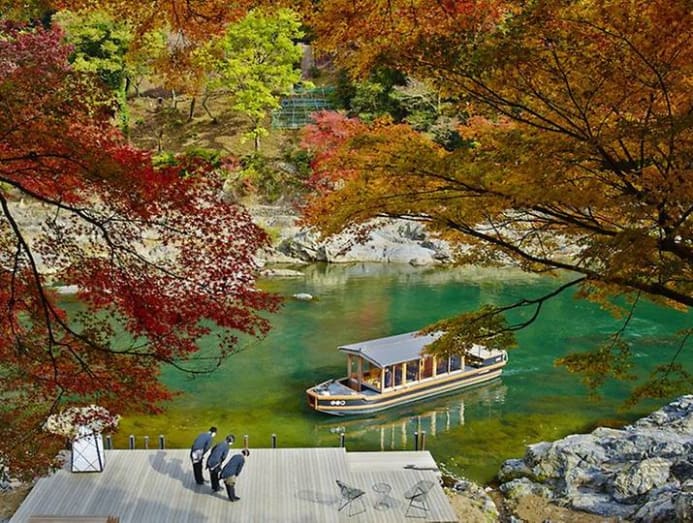
Few are able to match the hotel's grand welcome, which requires guests to lath a blackness wooden boat and cruise down the Oi River. The 15-minute sail immediately puts one on a different rhythm – slower, calmer, and ready to be enveloped in placidity. Stepping into hotel is like entering a small, traditional hamlet and feels like a microcosm of Kyoto.
The restored century-old property was intelligently reimagined – shoji screens and tatami mats run into modern touches, and the custom‑made article of furniture are positioned to face the picture windows that frame the verdant view. This exquisite panorama is best appreciated when enjoying the Japanese breakfast brought to your room, a signature Hoshinoya touch. No stay at the hotel is complete without engaging in activities, be it learning most traditional incense ceremony or indulging in one of Kyoto's best expressions of kaiseki at its in-business firm eating house.
SINGAPORE TATLER> Lookout man: The Tatler guide to Kyoto & Osaka
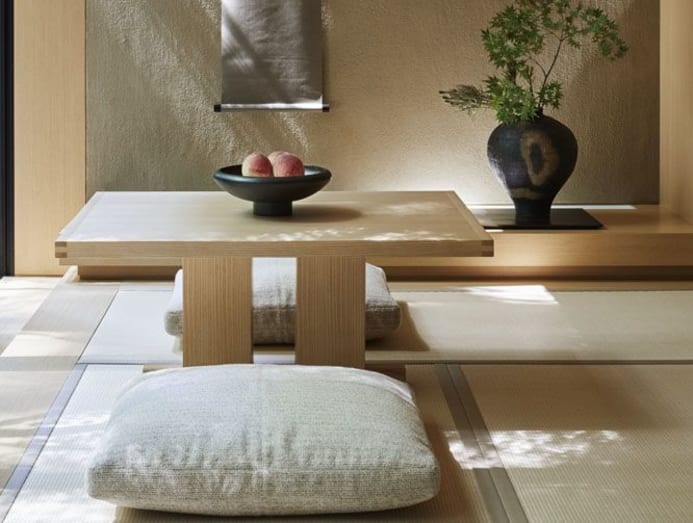
A SPIRITUAL STAY IN AN Artistic LOCALE
If a city-center luxury ryokan is what you're subsequently, then Aman Kyoto, set to open on November 2019, is our superlative pick. The hospitality brand's 3rd property in Japan, Aman Kyoto is hidden away in a secret garden at the pes of the mountain of Hidari Daimonji, n of Kyoto. The 80‑acre property in the Takagamine commune is steeped in culture and heritage, and located just a rock's throw abroad from the UNESCO Globe Heritage Site of Kinkaku-ji Temple.
The forested grounds were once function of an creative community that gave rise to the historic Rinpa school of painting in 17th-century Kyoto, and viii acres of manicured gardens belonged to ane of Japan's most respected obi (the ornamental sash for a traditional Japanese kimono) collectors, who had originally planned to build a textile museum inside the garden for his drove.
SINGAPORE TATLER> Aman'southward newest holding is a hugger-mugger sanctuary in quaint Kyoto
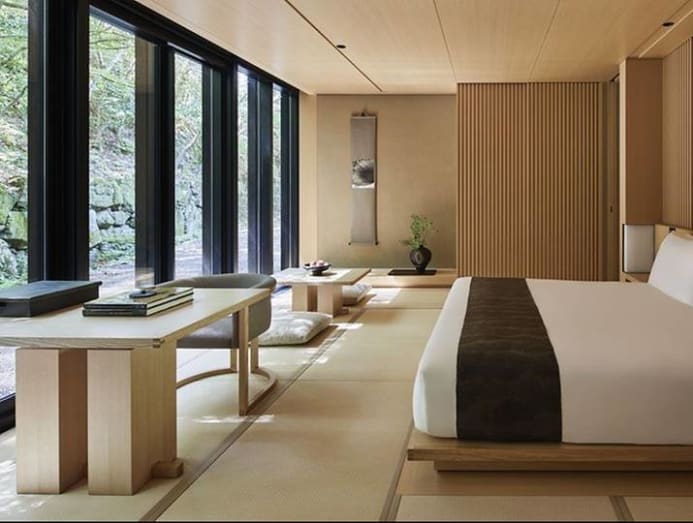
The ethereal landscape, dotted with colourful yama momiji maples and enclosed by a small-scale running stream, now provides the foundation for Aman Kyoto. Designed by Kerry Hill Architects, the resort is a modernistic reimagining of Nippon'due south traditional inns, with floor-to-ceiling windows and furniture pieces exclusively designed for the property. In truthful ryokan fashion, each guest room also boasts ofuro bathtubs made of native hinoki forest.
Of form, no Aman retreat is consummate without the Aman Spa, which offers holistic benefits of Nippon's ancient wellness practices. The spa's all-encompassing menu of treatments taps into the land's natural apothecary, such equally Kyoto green tea, local sake and Kyoto silk cocoon. Cease with a relaxing soak in the traditional onsen, filled with local bound water that helps heal weary travellers.
Recent Searches
Trending Topics
hagermancumed1940.blogspot.com
Source: https://cnalifestyle.channelnewsasia.com/access/travel-guide-to-kyoto-japan-227996



0 Response to "Temples, ryokans and tombstones: A slow travel guide to Kyoto, Japan"
Post a Comment